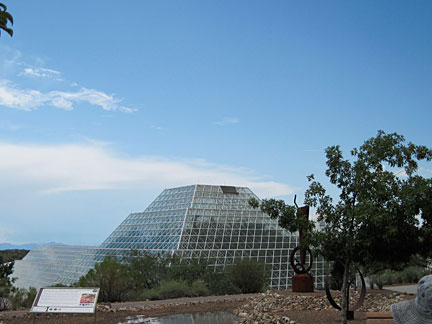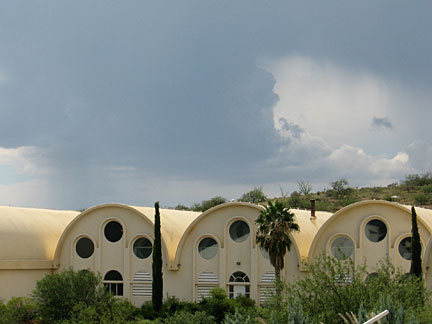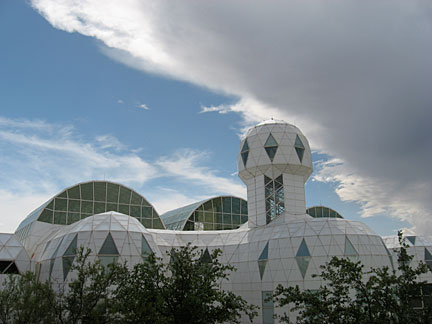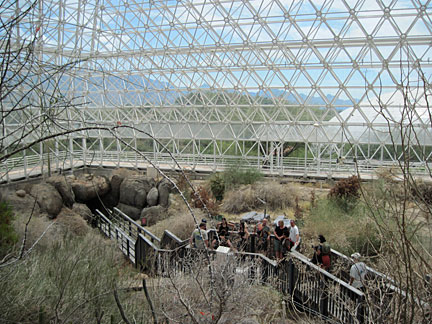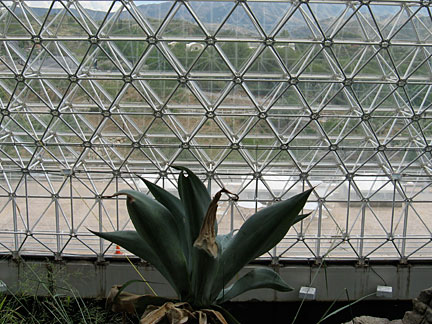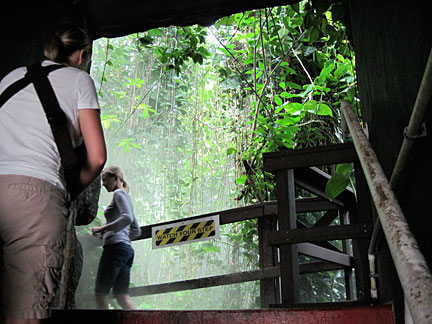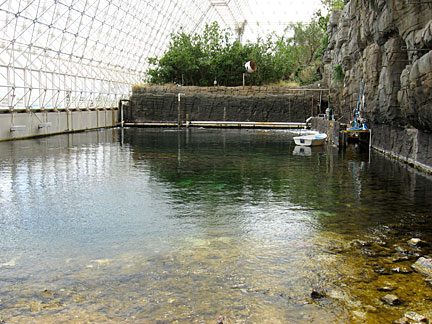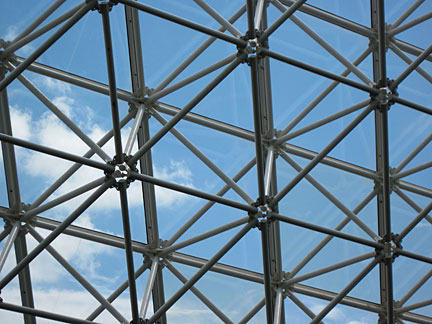 |
||||||
|
|
Website This is a website, an exoskeleton slash extension of the artifact, Vanishing Point. It is part of a larger website which is somewhat labyrinthine, as you may have noticed (I have been told this quite a bit, and while I am thick at times in the head, when something keeps coming up I eventually attend to it). I believe in the labyrinth. It is in some ways a kind of simulation of the pathways of the brain. As you may know, increasingly we are required in this world to use simulation. Architects use simulation all the time, designing via CAD/CAM and other software packages to visualize and do a lot of the dirty work in measurement and structural analysis. Economists use simulations all the time--most interestingly, perhaps, in studying the economics of simulated or virtual worlds. You've seen the crash test dummies (the safety dolls, not the band). The Mars rover that simulates the actions of all kinds of scientists. CSI and other criminal reenactments. Dollhouse simulations of crime scenes. Games like SimCity, SimCopter, and The Sims. Hundreds of flight simulators. Games to simulate fighting wars. Dating video games. The Nintendo Wii and its simulated sporty motions. Artificial intelligences. Gene mapping and modeling. The Art of Simulating Eagle Feathers. Taxidermy. Big Buck Hunter III. Clinical healthcare. GPS. Even the board game Operation with the electric feedback for your terrible errors. Et fricking cetera. At one point this stuff was groundbreaking, cool in its rudimentariness, the fact that we could do and explore and play with things virtually. Sometimes it was even fun. Now it's become such a part of our thinking and our living that we no longer even think about it. There are dangers in simulations, in that we get caught up with the surfaces of the information we're presented (look at Sherry Turkle's book Simulation and Its Discontents if you're interested, or just drive according to your GPS and always follow its instructions, even when it tells you to turn into oncoming traffic) and begin to trust ourselves in them without knowing (or even examining) the underlying assumptions of the simulations. That we slowly begin to build ourselves into them, to build our skills on these things which are not in fact real, though they are convenient. It doesn't take a creative writer to tell you this. Look at the odd failure of Biosphere 2 to really model Biosphere 1 (our earth) as it was supposed to do. You remember Biosphere 2, right? The bastion of some interesting science combined with a cultlike approach to psychology, the Biosphere is still visible--and visitable--about 45 minutes north of Tucson. It's twenty bucks to visit, and is entirely bizarre and worth your time.
Rainforest habitat, as viewed from below through a grate. The exterior structure of the simulated world is amazing, straight out of science fiction:
* Biosphere is based on a fantasy. That we could terraform our own or other planets. That we can simulate the biosphere (yes, the earth is Biosphere 1) in a contained, constructed enclosure. That we are approaching the level of technological prowess to accomplish this. That we can then manipulate aspects of the environment and see what happens. The Biosphere project placed a team of eight in a closed, isolated environment for two years. They lived in the Biosphere, raised their own food, adjusted the oxygen as necessary, scrubbed the carbon dioxide, were photographed from the outside, pruned and trimmed and planted and planned their world. And it's a beautiful world, isn't it? It's glossy and looks like how we thought the future would look in the eighties.
* From inside the sky is criss-crossed, divided up by those bars that form the geodesic dome, and since sunlight is a major way in which lowland Arizona differs from the rest of the Biosphere, the sun must be adjusted inside the Biosphere. This manipulation is one of the most obvious ways the simulated world is separated from the actual world. It's not as if much of our actual world isn't simulated, trimmed, groomed, prepped, glossed, and packaged for tourism or for our consumption. It's not as if we haven't thought of that as a species, how we want the world to look, how we will make it look. The Biosphere tour guide is defensive nearly the whole time we're on the guided tour. His banter is slick, his knowledge impressive, but he is easily pissed off by reasonable questions. Being inside the Biosphere is being inside of, and aware of, structure. It's transparent, but it's there, sectioned into triangles:
* Inside, a number of the plants are not doing so well these days. The humans didn't do well either, as you probably know. They split into factions. Freaked out on each other. Scientist X hates Scientist Z, and they both wrote competing memoirs about the experience, simulating for us their experience in the simulation. The oxygen dropped, and an intervention had to be staged. The experiment became a social experiment as much as an ecological one. A memoir is a kind of simulation too, certainly, how to frame your world, what to grow there, how to manipulate the variables for maximum effect, how much room to give remembered experience, and how much air do you want to give the whole thing. How much scaffolding do you want to show? How much style? Or do you want your style to approach a seeming stylelessness? How much do you trust your readers? How much do you want to trust your readers? How much do you want them to trust you?
* Looking into the sky inside the rainforest habitat you wouldn't know it's not real, that it is fabricated. It steams and is beautiful as it fogs up your camera. On the tour, you come up the steps through the artificial fiber hallway, out from the desert landscape of a moment ago into this new thing. The beach in the ocean environment looks like a beach in an actual ocean until you see the wall, the cement ledges on the fake rock cliff in which they planted frankincense plants given to them by the Sultan of Oman, the end of the experience, and that you are contained in something. You are in both, the double, the real world and the Biosphere 2 version of it. It's hard not to be ironic about the endeavor in these days of overwhelming irony, of the petered-out promises of virtual reality, of media overlaying media onto the world, of the heads-up displays that never quite materialized in our Nissan Altimas. This in comparison seems so tame, uncool. But you can see inside of it, underneath it, in the guts and passageways, the steam tunnels and walls of pipes that lead to and from everywhere.
* What is most impressive about the thing is that they built it and they did it. It was done quickly, and without any sort of government money (which is probably why it was able to be done so quickly). And it works, mostly, with constant tweaking. It is not sky, not really, that you're seeing. You can't just discard structure. Even if you lived in the Biosphere and eventually acclimated yourself to existing solely in this giant high-tech jungle gym (even the term jungle gym references simulation, the bars mimicing the crisscrossing vines hanging down from trees, your grade school antics simulating monkeys, impressing no one), even then you might forget to think about the structure (unless the oxygen goes, or the dome buckles, the bridge collapses, and the cars are in the icy river, and then structure is on our minds again, those civil engineers on the quickdial of the brain). This doesn't mean it's not beautiful or meaningful, that a simulated experience cannot evoke the same emotional response (otherwise books would be no good at all). For all we know everything could be simulation and we might just not know it. For we are pleased and entertained by our entertainments, our media structured, focus-grouped, engineered to excite emotion. (The real world excites emotion, too, but not reliably, not on-demand.)
* This page is simulation too. It is not, after all, the kind of page we mean when we say page, or when we used to say page, aloud or not, to our lovers or to the air. It is not a physical object, but it manifests itself as one. You can see it. You can touch it, or a version of it. You have accepted the code of conduct that allows this thing to function. After using the word webpage for long enough (insert OED research here as to how long it has been in parlance--I'll just leave that note to self in the essay, a bump, a bit of structure between you and the sky, since you can find your own OED research and become a participant in the making of meaning that we are kicking back together), I think many of us just call these spaces pages. The actual code of this page includes this text, but is marked up and interpreted (and even these letters are simulations of physical letterforms; they reduce finally to binary, ones and zeroes, if you look at them hard and long enough).* A real paragraph doesn't need a <p> and a </p> in it: it has indentation, separation from the bits above it, below it. That is a kind of code. We know what that means, and it didn't always mean the same thing. You don't need code to indicate that your book page is a page of a book. We've just internalized those codes a long time ago, and have agreed on them. This HTML, this new code, is just new. I would bet that almost none of you ever look at the HTML code of the pages you read. Unless you're involved in the making of pages, in which case you have the maker's eye, the craftsman's eye, and want to understand how these things are made, how its effects are achieved. So we agree on this, that it's convenient to think of this page as a webpage, as one element of the websprawl that is the site for the book, within the site for the author, with the fantastically larger and unpoliceable world of what is out there on the web. Much of human work is simulation, is representation, is manipulation. Certainly that's what this is. Which is to say it is a convenience that this exists at all. A nod to the structures that make it possible. And a pleasure to have you here exploring my dungeon. __ * Allow a moment for a footnote, please. As if to prove my point that this page is a code, and not automatically readable, I recently figured out that though this website renders mostly well in Firefox and even in decrepit Internet Explorer, Safari somehow mungs it up. I'm working on a workaround. For instance, if you're reading this on Safari and you type a word into the box at top, it won't redirect you properly. Sorry.
|

